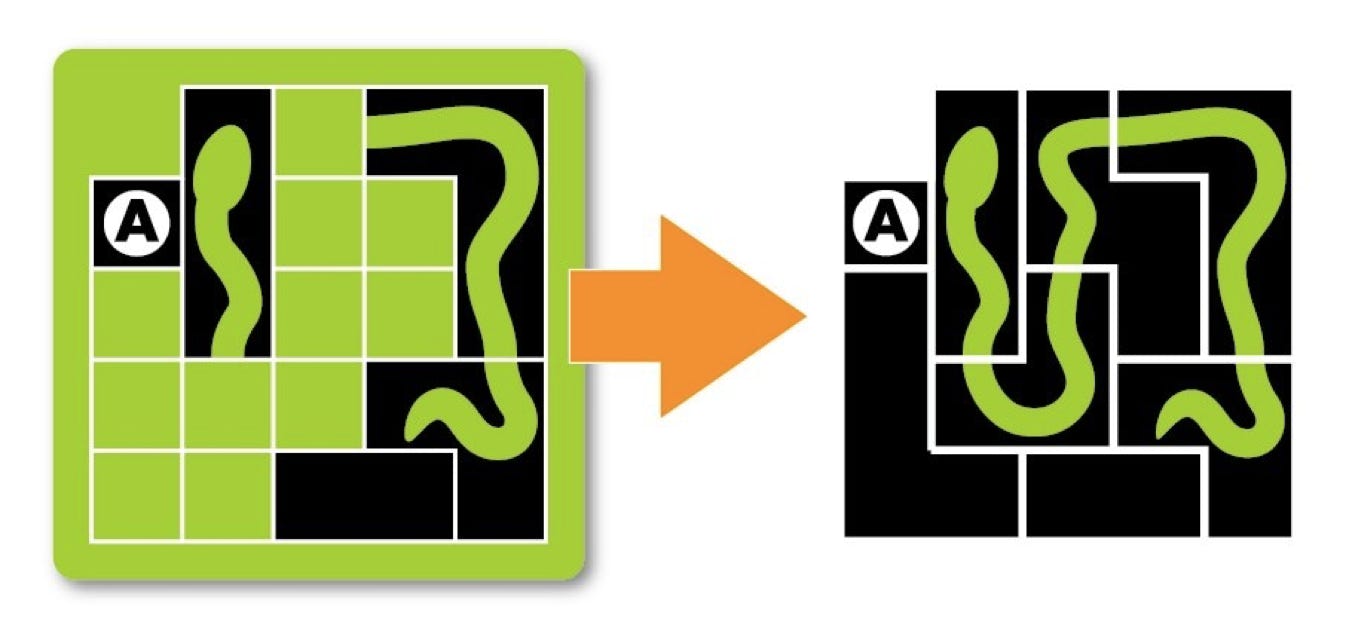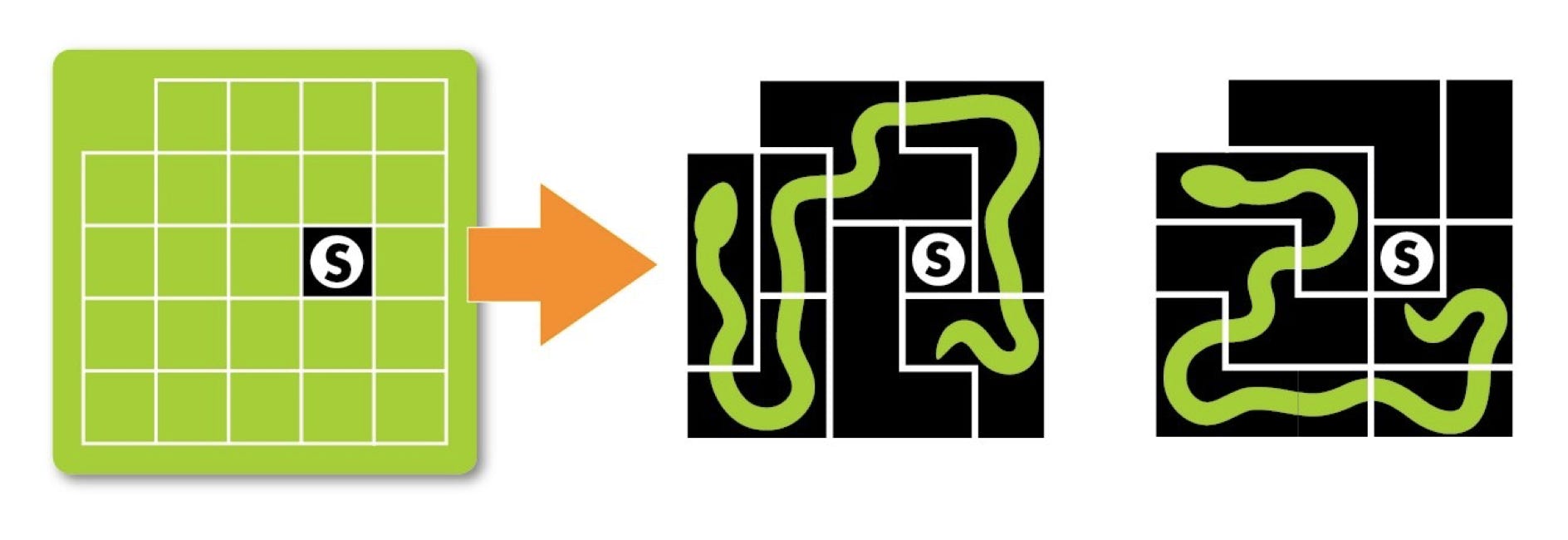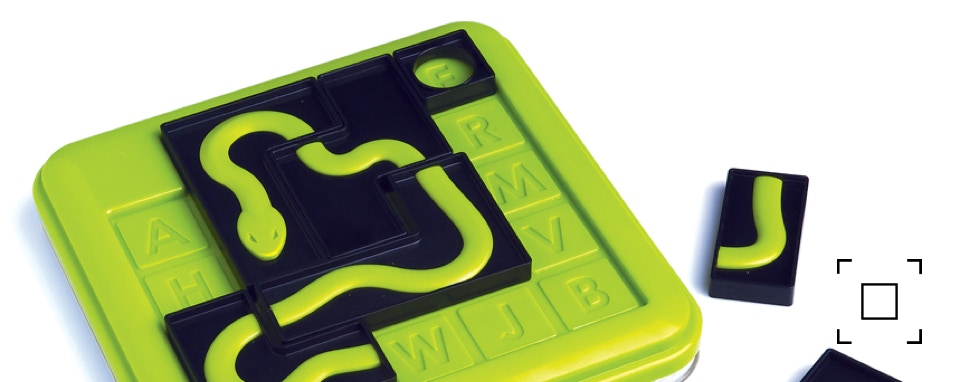Anaconda
The story behind the creation of Anaconda
Raf Peeters, January 2010
The idea for “Anaconda” came to me when I was looking for a way to make a small, affordable puzzle game. One of the biggest factors in the cost of our Smart Games are the challenge booklets and challenge cards. I wanted to make something without a booklet, so the challenges needed to be printed on the game board itself in some way.
MAKE (OR BREAK) THE SNAKE
The solution was to make a puzzle that would cover the game board completely, except for 1 square. On this square I could place a number to indicate the challenge. I still needed an interesting game concept and luckily, I came up with an idea pretty quickly. The puzzle pieces would be double sided with parts of a snake’s body printed on some sides. The object of the game was to make one complete snake from head to tail. All the puzzle tiles that you don't need for the snake should be placed on the game board with the blank side facing up.
THE RIGHT MIX
Although this idea sounds easy enough, it took me almost a year to find the right combination of puzzle shapes and snake sections to make the game work. In the first version I created, you could only make 3 different snakes. In the final product, it’s possible to make more than 100 different snakes. Once I had the challenges, the testing began. I realized very quickly that this game would be too difficult for the average puzzler. Sometimes you need to abandon your original idea to make any progress. So, the final product includes a challenge booklet (but is still very affordable).
For the first 77 challenges you get hints about the correct place for some puzzle pieces. The last 23 challenges are just as I’d original planned, where you’re only given the position of the square that needs to remain visible. The numbers on the game board have been changed to letters, to avoid any confusion when solving the first 77 challenges.
LESS IS MORE
For this product we pared the packaging material down to the minimum. All we needed was a cardboard box. When the product is still in the box with its transparent lid on, it doesn’t even need a plastic blister. The lid also provides storage space: when you finish playing you can put all the puzzle tiles and the challenge booklet in the transparent lid then click the game board on top of it.

top: example of a starter challenge (left) and solution

top: example of a wizzard challenge (left) with two possible solutions (right)

Website ©2010 Raf Peeters
Products and images: © Smart
